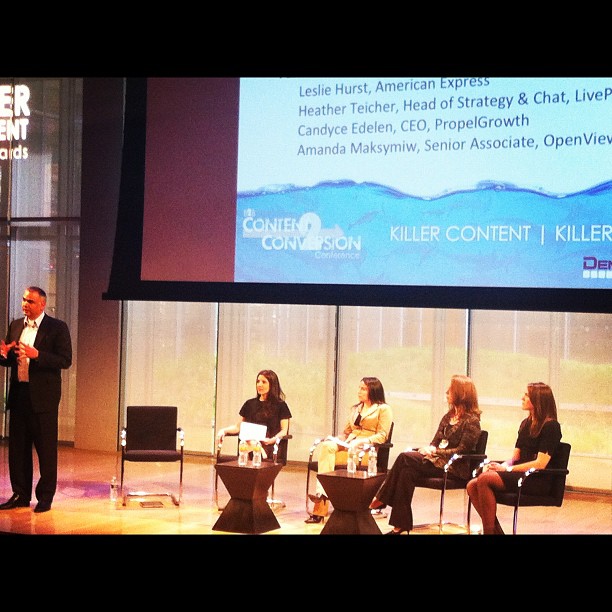Last week, I facilitated a lively marketing leader panel discussion for Andrew Gaffney’s Content2Conversion event which was an audience of 300 B2B marketers cross industry. The event was focused on understanding what types of content buyers were interested in viewing at varying stages of the buyers funnel. Leslie Hurst from American Express Open, Heather Teicher from click to chat leader Liveperson.com, Candyce Edelen, CEO of propelgrowth.com, and Amanda Maksymiw from OpenView Labs participated on my panel. Click here for the webcast to our panel .
While there were several key takeaways around measuring content, mobility, social, and privacy, there were 5 key areas that were surfaced during our discussion that motivated me to capture them in my blog.
- LinkedIn has increasing relevance and value in the B2B community. Two of four panelists mentioned how sharing content on LinkedIn was more reliable for information sourcing than that of Twitter as the information from a connected contact has a relationship and ‘feels’ more relevant than a stranger. One audience member from Rackspace who has 15,000 followers on LinkedIn is leveraging LinkedIn’s APIs to its web product pages, so when recommendations are published, prospective buyers can check to see if other buyers of Rackspace services are in their network.
- Content measuring – successful companies measured how often a piece of content was shared (shared with a friend, shared on links, shared with a blog, etc.) AND tied it to sales ready opportunities; at that point a piece of content was seen as a very valuable contributor to the sales and revenue processes.
- On segmentation and reaching end customers – across the panel, there was a relentless focus on understanding the customer and their respective pain points as a precursor to segmentation; what was less of overall focus for each panelist was reaching these customers via a specific technology (mobile vs. desktop) as well as the medium for reaching the end users (twitter, facebook, linkedin). Two panelists mentioned that mobile was ‘built into’ the development process rather than thought of as a separate initiative. Facebook was universally seen as adding a human touch to a B2B organization but was not seen in converting meaningful leads.
- On influencers in the buying process – quite a bit of emphasis was placed on identifying both customers and influencers that would help in the buying process by marketing to them, with them, and through them through co-developing content. This was also referenced by one of the marketing automation vendors as an approach.
- On Automation – one panelist summed it up best by saying, “Marketing automation has made some of our job much easier and much harder at the same time. SFDC is not built for marketers which is where marketing automation helps us but marketing automation is causing us to think differently than before and thus creating more work for us.” This seems to be the conundrum many organizations face – how to implement change with limited resource.
It was a terrific experience moderating this panel. What are you seeing in these areas?


